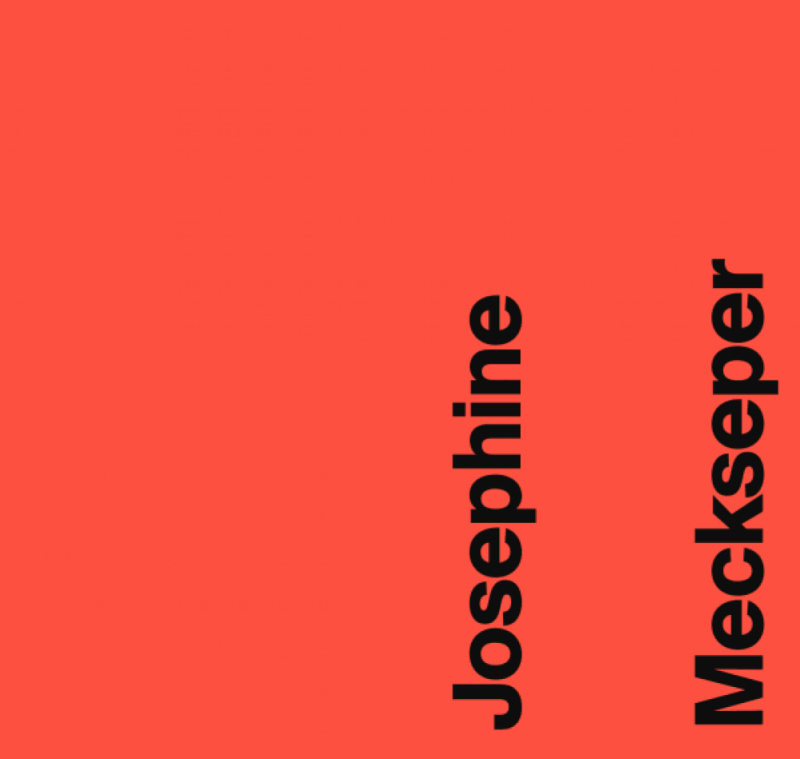Excerpt from Josephine Meckseper at Frac des Pays de la Loire, Carquefou, France, Josephine Meckseper
Essay by Joshua Decter
This is how Meckseper has approached her Frac show: selecting artworks from the Frac collection to install among her own artworks. And not just any artworks: primarily the work of women artists, an act that at least symbolically reverses the percentage of female-to-male artists in the Frac’s collection (currently twenty-seven to sixty-three percent).
It could be said that Meckseper approaches the institutional space of the Frac itself as a kind of macro-scaled vitrine. In other words, as a museum, a place to display things. A question might arise in our minds: are we being asked to reimagine this retrospective as an extended form of Meckseper’s art practice? If so, it can be considered more than just a retrospective: it is also an exhibitionary platform that allegorizes how Meckseper makes art. And this includes an indexing of how the artist repurposes, within her own esthetic system, procedures from the history of Readymades and appropriation art, wherein not only popular culture, but also art itself, is conceptualized as a Readymade ready to be repurposed as art. For example, a 1988 work by Rosemarie Trockel, Untitled, features a formal white button-down shirt hanging inside a glass vitrine, and yet the work defies easy interpretation, for what appears to be an ordinary piece of clothing is immediately re-codified when presented within/as a sculptural artwork.
Viewers encounter three photographic works on one of the five shelves designed by Meckseper for this exhibition: Valie Export’s Body Sign Action (1970), Sherrie Levine’s Untitled (After Walker Evans: negative) (1989), and Martha Rosler’s First Lady (1967-1972). This grouping can be experienced, in its own right, as a micro-exhibition, reminding viewers of the central role women artists have played in rethinking the language of art over the past half century, while also signaling Meckseper’s interest in feminist discourses and the use of photography as a means of interrogating representation, popular culture, advertising, politics, and the performing/performative body, among other phenomena. Alluding to memories of the complex history of the RAF and the Baader-Meinhof group from her childhood in Germany, Meckseper includes a drawing by Johannes Kahrs (Meinhof, 2001) based on a photograph of one of the group’s leaders, Ulrike Meinhof (who at the time was a close friend of Meckseper’s aunt) with her arms raised above her head in a gesture that could be understood as both defiance and submission; was it a moment of arrest, of interpellation by the authorities? Continuing the atmosphere of defiance, Monica Bonvicini’s Not For You (2009) spells out its titular words in mirrors, setting into motion a kind of trap for our gaze wherein we are mirrored by/into the artwork while reading that what we are seeing––which includes ourselves––is not, paradoxically, for us. But for whom is this artwork meant? One can surmise that Meckseper selected the Bonvicini as a way to comment on how women have been disproportionately excluded from canonical art histories and institutional collections. Perhaps Meckseper is interpreting the Bonvicini work as a demand for alternative audiences, viewers, histories, and institutions that would be constructed by women for women.

